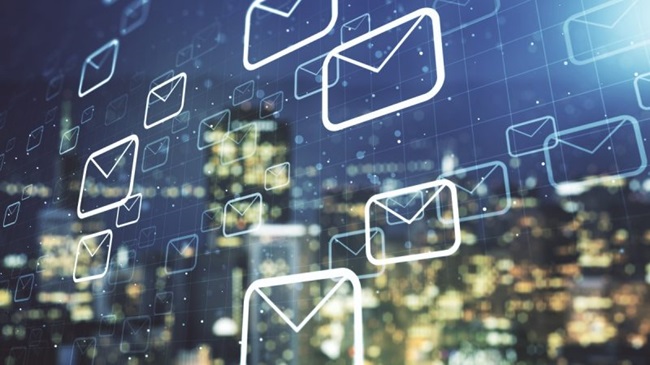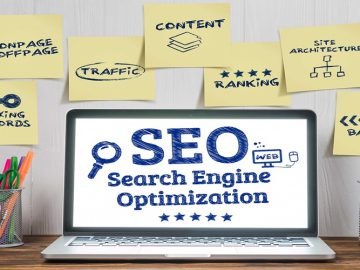In the world of digital marketing, bulk email campaigns remain a powerful tool for reaching large audiences, promoting products or services, and driving customer engagement. However, the success of these campaigns depends on how well they are executed. Poorly designed campaigns can lead to low engagement rates and even damage your brand’s reputation.
This article explores proven tactics to enhance customer engagement through bulk email marketing, ensuring your campaigns are effective and impactful. We will also touch upon how you can manage mass email in Gmail efficiently.
Understanding Bulk Email Marketing
Bulk email marketing involves sending a single email to a large group of recipients simultaneously. This approach is often used for newsletters, promotional offers, product updates, and event invitations. The key to success in bulk email marketing lies in delivering relevant, valuable content that resonates with your audience.
Building a High-Quality Email List
The foundation of a successful bulk email campaign is a high-quality email list. Your list should consist of engaged subscribers who have opted in to receive communications from your brand. Here’s how to build and maintain a robust email list:
1. Use Double Opt-In
Implementing a double opt-in process ensures that subscribers genuinely want to receive your emails. After signing up, they receive a confirmation email asking them to verify their subscription. This step helps maintain a high-quality list and reduces the likelihood of your emails being marked as spam.
2. Offer Valuable Incentives
Encourage sign-ups by offering valuable incentives such as exclusive discounts, free resources, or entry into a prize draw. Make sure the incentives are relevant and appealing to your target audience.
3. Promote Sign-Ups Across Channels
Promote your email list across various channels, including your website, social media, and in-store if applicable. Use clear and compelling calls to action to encourage visitors to subscribe.
4. Regularly Clean Your List
Periodically remove inactive subscribers and invalid email addresses from your list. This practice helps improve your deliverability rates and ensures you’re targeting engaged recipients.
Using Mass Email in Gmail
For small businesses or individuals, using mass email in Gmail can be an effective way to reach a large audience without investing in specialized email marketing platforms. However, it’s essential to follow best practices to ensure your emails are delivered and well-received.
1. Utilize Gmail’s Bulk Send Feature
Gmail allows you to send bulk emails to a large group of contacts using the BCC (blind carbon copy) field. This method keeps the recipients’ email addresses private and can help you reach a wide audience quickly.
2. Personalize Your Mass Emails
Even when using mass email in Gmail, personalization is key. Use merge tags to include each recipient’s name and other personalized information in your emails. This approach can make your bulk emails feel more personal and increase engagement rates.
3. Monitor Your Send Limits
Gmail has daily send limits to prevent spam. Be mindful of these limits to avoid having your account temporarily suspended. If you need to send more emails than Gmail allows, consider using an email marketing platform that supports higher volume sending.
Crafting Compelling Content
Content is king in email marketing. The content of your bulk emails should be engaging, relevant, and valuable to your audience. Here’s how to craft compelling content that captures attention and drives action:
1. Personalize Your Emails
Personalization goes beyond addressing the recipient by their first name. Use data to tailor content to individual preferences and behaviors. This could include personalized product recommendations, special offers based on past purchases, or content relevant to their interests.
2. Write Engaging Subject Lines
The subject line is the first thing recipients see and plays a crucial role in whether they open your email. Craft subject lines that are clear, concise, and intriguing. Use action-oriented language and create a sense of urgency or excitement.
3. Use a Conversational Tone
A conversational tone makes your emails feel more personal and engaging. Write as if you’re speaking directly to the reader, and avoid overly formal or technical language. This approach helps build a connection with your audience and makes your brand more relatable.
4. Provide Value
Ensure your content provides value to your subscribers. This could be in the form of useful information, exclusive offers, or entertaining stories. When subscribers find your emails valuable, they’re more likely to engage with your content and remain loyal to your brand.
5. Include a Clear Call to Action (CTA)
Every email should have a clear and compelling call to action that tells recipients what you want them to do next. Use action-oriented language, such as “Shop Now,” “Learn More,” or “Sign Up,” and make sure your CTA stands out visually.
Designing Visually Appealing Emails
Visual appeal is critical for capturing your audience’s attention and keeping them engaged with your content. A well-designed email not only looks professional but also enhances readability and encourages action.
1. Use a Clean and Responsive Design
A clean, uncluttered design makes your email easy to read and navigate. Ensure your emails are responsive, meaning they display correctly on both desktop and mobile devices. Given the growing number of people accessing emails on their phones, mobile optimization is essential.
2. Incorporate High-Quality Images
High-quality images can enhance your email’s visual appeal and help convey your message more effectively. Use images that are relevant to your content and ensure they load quickly to avoid frustrating your readers.
3. Highlight Important Information
Use design elements such as headings, bullet points, and bold text to highlight important information and make your content more scannable. This approach helps readers quickly find the key points and increases the likelihood of engagement.
4. Maintain Brand Consistency
Ensure your emails reflect your brand’s identity by using consistent colors, fonts, and imagery. This consistency helps build brand recognition and reinforces your brand’s image in the minds of your subscribers.
Leveraging Segmentation and Automation
Segmentation and automation are powerful tools that can significantly enhance the effectiveness of your bulk email campaigns.
1. Segment Your Audience
Segmenting your email list allows you to tailor your messages to specific groups within your audience. Common segmentation criteria include demographics, past purchase behavior, engagement levels, and interests. By sending targeted emails, you increase the relevance of your content, which can lead to higher open and click-through rates.
2. Use Automation Tools
Automation tools can streamline your email marketing efforts and ensure timely delivery of your messages. Set up automated workflows for various stages of the customer journey, such as welcome emails, abandoned cart reminders, and post-purchase follow-ups. Automation helps maintain consistent communication with your audience without requiring manual effort for each email.
3. Implement Triggered Emails
Triggered emails are sent based on specific actions or behaviors, such as signing up for your newsletter, making a purchase, or browsing certain products on your website. These emails are highly relevant and timely, which can significantly boost engagement and conversions.
Ensuring Deliverability and Compliance
Even the most compelling email won’t drive results if it doesn’t reach your audience’s inbox. Ensuring high deliverability rates and compliance with email marketing regulations is crucial for the success of your campaigns.
1. Maintain a Clean Email List
Regularly clean your email list by removing inactive subscribers and invalid email addresses. This practice helps improve your deliverability rates and ensures you’re only sending emails to engaged recipients.
2. Use a Reputable Email Service Provider
Choosing a reputable email service provider (ESP) can significantly impact your deliverability rates. Reputable ESPs have established relationships with internet service providers (ISPs) and employ best practices to ensure your emails reach their intended recipients.
3. Comply with Regulations
Ensure your email campaigns comply with regulations such as the General Data Protection Regulation (GDPR) and the CAN-SPAM Act. This includes obtaining explicit consent from subscribers, providing a clear way to unsubscribe, and including your business’s contact information in your emails. Compliance not only protects your business from legal issues but also builds trust with your audience.
Analyzing and Optimizing Your Campaigns
Continuous analysis and optimization are key to improving your email marketing performance over time. Regularly review your campaign metrics and make data-driven adjustments to enhance your results.
1. Track Key Metrics
Monitor key metrics such as open rates, click-through rates, conversion rates, and unsubscribe rates to gauge the effectiveness of your campaigns. These metrics provide insights into how your audience is interacting with your emails and where you can make improvements.
2. Conduct A/B Testing
A/B testing allows you to compare different elements of your emails, such as subject lines, CTAs, and content, to determine what works best. Use the results of your tests to refine your strategy and optimize your future campaigns.
3. Gather Feedback
Don’t hesitate to ask your subscribers for feedback on your emails. Use surveys or direct questions to understand what they like, what they don’t, and what they’d like to see more of. This feedback can provide valuable insights for improving your email marketing efforts.
Winning with bulk email marketing requires a strategic approach that combines building a high-quality email list, crafting compelling content, designing visually appealing emails, leveraging segmentation and automation, ensuring deliverability and compliance, and continuously analyzing and optimizing your campaigns.
Whether you’re using specialized email marketing platforms or sending mass email in Gmail, implementing these proven tactics can enhance customer engagement, build stronger relationships with your subscribers, and drive better results. Embrace these best practices to create bulk email campaigns that not only stand out but also resonate with your audience and achieve your marketing goals.



